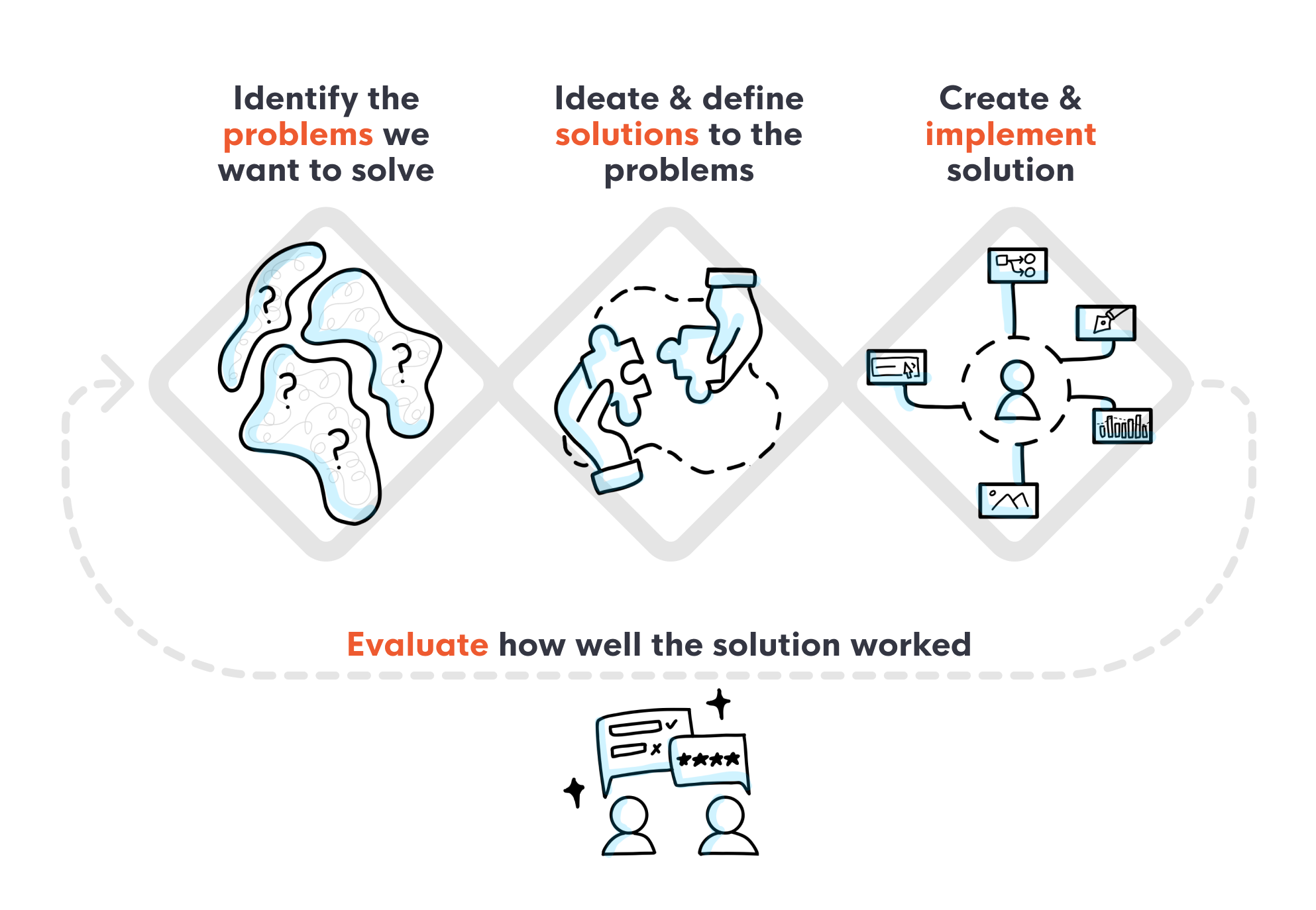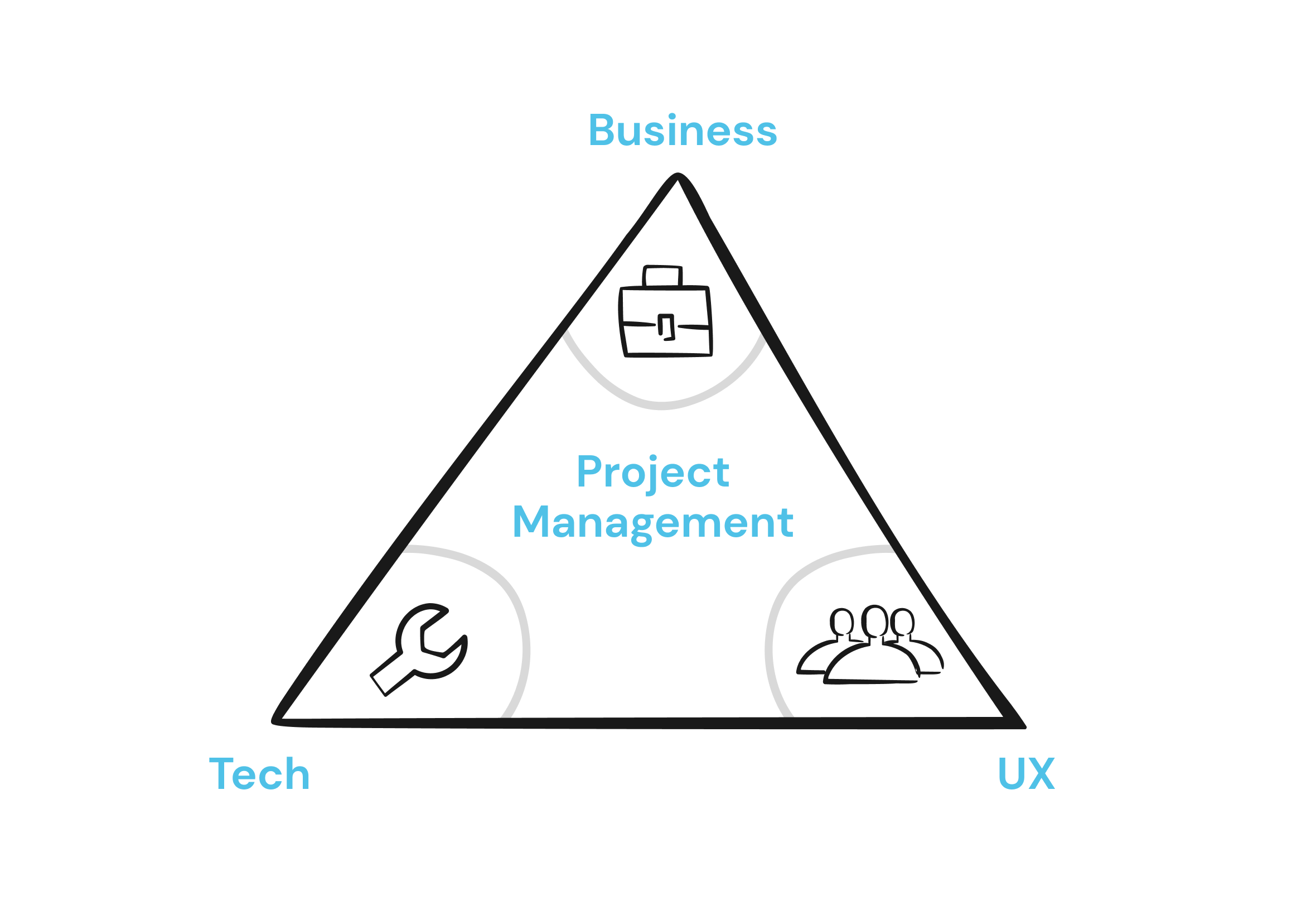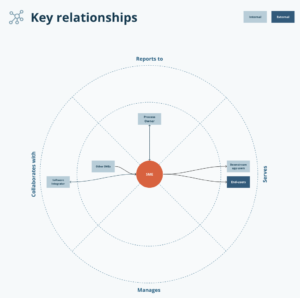
11 Jul 5 ways to fix information silos in your product team
We work with a team whose product functionality relies heavily on a group of subject-matter experts– SMEs. Despite (or maybe because of) their deep expertise, this group has a hard time imagining how information they grasp intuitively might be very difficult for ordinary consumers– the market they are trying to reach– to make sense of.
Call it an empathy gap, perhaps, but this is a simple example of how a siloed understanding can arise in a product team. In this case, a misalignment between product team SMEs and their target customer.
How can you fix information silos, or better yet, prevent one from ever occurring?
Generally, information silos happen when people are deep in the details of their work, and lose track of how what they’re doing connects to a bigger picture. A sense of the bigger picture comes from asking questions like– how does the work I’m doing relate to what others are doing, and why does it all matter?
- How does my work affect downstream timelines? If I run into a delay, who else might be affected?
- Is my work supporting the product outcomes we’re looking for?
- How does my work support our organization’s strategic goals?
- Is there anything I’m doing that could create added complexity or problems for someone else on the team?
People need feedback on their work– a sense of how their work impacts others, and how it affects outcomes that are key to their group’s success. And teams need effective communication and collaboration to ensure they can achieve their desired goals and outcomes.
It’s human nature to lose ourselves down a rabbit hole sometimes, and forget what’s happening outside it. But how can product teams prevent such siloed behavior, and how can you fix it if it’s already taken hold? To avoid or reverse a bad information silo dynamic, product teams must cultivate effective:
- Culture
- Processes
- Mindset
- Tools
- Role definition
1. Nurture a culture of trust, transparency & mutual respect
Underlying every silo is a culture problem. Putting in place a culture of trust, transparency & mutual respect is the responsibility of product leaders and other senior roles within the organization. Without this dynamic, don’t even hope for effective communication and collaboration.
Unfortunately, many organizations operate routinely with unhealthy rivalries and constant bickering among functions. Many of us have seen situations where a technical team dismisses user research because they feel they know better what kind of product experience their customer wants. Or business teams, operating under heavy pressure to ship features they deem necessary to their market, who fail to understand the demands this puts on their dev team.
This type of dynamic can easily produce an environment of mistrust and lack of respect between team functions. Product leaders must strive to ensure the team has a shared understanding of why different groups are making the decisions they are, and how it rolls up to what the team is trying to accomplish. An effective product leader should clearly articulate a vision for the product and how it supports the organization’s goals, but also ensure that each group understands the role they play in achieving those goals.
2. Put in place processes that promote collaboration, cross-functional communication & creative problem-solving
To support a great product team culture, effective processes must be in place to ensure that culture is baked into the everyday habits of the team. An effective Agile/Scrum process for example, is designed to ensure that daily team rituals promote collaboration, cross functional communication and support a spirit of shared creative problem-solving.
Unfortunately, simply implementing some version of Agile/Scrum does not guarantee a healthy process. We hear of many teams where an Agile Scrum process is merely executing poorly-conceived product decisions, and not supporting any form of collaborative creative problem solving. In situations like this, the process is hardening information silos, not fixing them.
 We recommend a process called Triple Diamond, which was first conceived by the product team at Zendesk. A key element of any collaborative creative problem solving process like Triple Diamond is that it incorporates cycles of divergent and convergent thinking.
We recommend a process called Triple Diamond, which was first conceived by the product team at Zendesk. A key element of any collaborative creative problem solving process like Triple Diamond is that it incorporates cycles of divergent and convergent thinking.
 Divergent thinking is where open ideation is encouraged. During this stage, no idea is a bad idea, and participants are encouraged to think broadly. This is key to promoting the team’s creativity.
Divergent thinking is where open ideation is encouraged. During this stage, no idea is a bad idea, and participants are encouraged to think broadly. This is key to promoting the team’s creativity.
In the convergent phase, by contrast, the team comes together and, applying shared agreed-upon criteria, determines the ideas they want to carry forward in the process.
3. Encourage a hypothesis-driven mindset & develop the necessary skills to support it
An effective team needs to have a shared mindset everybody buys into. We call this a hypothesis-driven mindset.
Achieving this way of thinking can be challenging for teams that have operated for a long time on a command and control type structure. Many teams traditionally have decisions handed down from senior people within the organization, turning the rest of the team into what we call ‘order takers.’
Reduced to taking an order and executing on it, team members may not understand why any particular decision has been made. In organizations ruled by this mindset, team members’ jobs are framed as just implementing decisions that have been made above their pay grade. They have no natural context on why product decisions are being made, and often limited ability to challenge or question those decisions.
A hypothesis driven mindset is the complete opposite of this. It recognizes the fact that every product decision is made based on a set of assumptions. When implemented effectively, a hypothesis driven mindset helps the team expose their assumptions. Assumptions are then framed as hypotheses that may need to be tested.
If a product’s success, for example, hinges on its adoption by a particular age demographic, then the product concept probably needs to be tested extensively with that demographic to ensure alignment with their needs before the team invests in building it.
Not every hypothesis needs to be tested, since many assumptions are very likely to be true. But ones that are poorly understood and also involve high risk to desired product outcomes, are the ones that most need to be validated.
Presence of team practices around how to frame experiments to test hypotheses is a sign of a mature and un-siloed organization.
4. Use tools for effective collaboration
Tools for effective collaboration seem like a fairly simple thing to have in place. Most teams have some way of managing product backlogs and related tasks, typically via a tool like JIRA. In virtually all teams work is prioritized periodically and all team members have visibility of task priorities and sequencing.
But there’s another kind of tool that successful product teams use effectively. These are tools for nonlinear brainstorming, creative ideation and collaboration.
I’m referring to what are generically known as digital whiteboarding tools. Based on traditional physical whiteboards with sticky notes on them, tools like Miro or Mural enable successful teams to get the most creative thinking from their team members.
They allow the team to integrate perspectives from different groups— subject matter experts, UX researchers, business folks, engineers— to ensure the activities that the team is working on are supportive of the organization’s business goals, and efficient in helping the team achieve the product goals they’re looking to accomplish.
5. Frame your team’s roles effectively
Finally, it’s critical that each team member understands their role and how it supports the big picture and overall goals of the organization.
In addition to knowing what is expected of their role, they also need to understand how their role and function relates to others within the product team, and within the organization at large.
What are the end goals? What dependencies are there between their role and others? What factors do they need to take into account from other groups when making decisions within their role? In other words, they need context.
 Generally speaking, every product team has roles that cover 4 key functions:
Generally speaking, every product team has roles that cover 4 key functions:
- Business
- Technical
- Project management
- UX research and design
Given a goal of mutual respect and understanding among team functions, a core element of a product team’s culture must be to understand that your role is to deliver within your particular team or function.
If you’re a coder, for example, your job is to ensure you’re delivering high quality code, and understand that your activities are judged based on the criteria of success within your role.

But you also need to understand where the information comes from, that enables you to make effective decisions within your role. Often that information, or context, comes from outside of your role, not just from your boss or supervisor. A coder, for example, may need effective collaborations with:
- Their boss, say head of Engineering, or CTO, to ensure their work is aligned with technical goals and architecture
- UX, to understand not just the UI designs, but also why a design is organized the way it is, and how it translates the end-user’s needs
Knowing how to fix information silos will improve cross- functional teamwork
We find it helpful for each team member to understand their role within the context of a key relationship map. Everyone likely has a function or org they report up into, and may have reports whose work they manage. These are the vertical relationships within their function.
But each team member must be mindful as well of key horizontal relationships– those they need to collaborate with, and those who are served by their work. Effectively understanding the needs and perspectives of those colleagues and stakeholders is key to fixing information silos.
